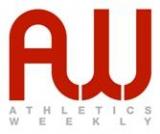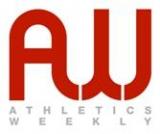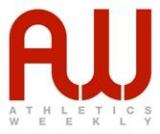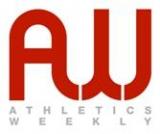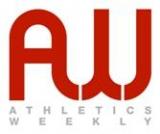Folders |
Injury avoidance for distance runnersPublished by
Strength and conditioning can benefit long distance runners in many ways, says Graeme EverardTraining for distance running is demanding on your body and shouldn t just be about running and getting in as many miles as possible. If you are not strong in certain areas and not technically sound when running you will eventually break down and potentially not make it to the start line. Working at improving your posture, adding in simple strength and conditioning exercises, stretches and running drills will improve your functional stability, running technique, improve your performance and help you to avoid common overuse running injuries. PostureImproving your running posture can translate to greater efficiency, endurance, speed and fewer injuries. Better posture is something that can be achieved in a relatively short time, but needs constantly reinforcing. Ideally the head, shoulders and pelvis should be stacked in line with each other. Other daily activities and work postures can impact performance and may need addressing. Head positionSelf-check Self-correction ShouldersSelf-check Self-correction You will need to maintain this good position when running and a functional exercise to perform to help you with this is ‘Running Arms . Holding small weighted dumbbells in each hand and remembering the good posture mentioned, drive your elbows backwards and forwards while keeping your elbows bent at a 90 angle for 3 sets of 30 seconds. (PIC 1)
PelvisSelf-check Self-correction FeetSelf-check Self-correction
Balancing exercises
Muscle strength/imbalances and functional stabilityMany endurance athletes do not have good strength and functional stability and this can result in injury and time away from training. A good sports physiotherapist experienced in working with runners can identify shortfalls and provide a suitable rehabilitation programme that can help prevent overuse injuries. Glutes and hipsIt is important that your hips are stable and that the gluteus muscles are strong and being used appropriately for efficient running. Common problems include delayed recruitment of the gluteus maximus with substitution of the deeper gluteal muscles causing recurrent buttock tightness and pain, the hips and knees rotating inwards due to weakness of the gluteus medius muscles or dominance of the inner thigh hip adductors and a shortened stride length due to dominance of the hip flexor and tensor fascia lata muscles (TFL). GlutesSelf-check
HipsSelf-check To check your hip extension range (the Thomas test), perch on the edge of a strong table or physio plinth, pull one leg up to your chest with knee bent and lay down with opposite leg left extended out with knee bent. Your hip of this leg should be able to extend past neutral. (PIC 5)
Self-correction
If you would like to strengthen and challenge your glutes and hips further, a good all-round glute and hip exercise is to tie a theraband loop just above your knees remembering good posture squat down and then walk sideways stretching the theraband. This exercise will really work your hips and glute muscles. (PIC 7)
Single leg bridge repetitions and holds with opposite leg extension is another good exercise for glute recruitment. (PIC 8)
Calf musclesWeakness of the deeper calf muscles is common in endurance athletes especially on eccentric loading (lowering down from the heel raise). After injury, calf bulk is often reduced and needs specific loading exercises to be fully rehabilitated. Repetitive loading can reduce the joint reaction ‘the spring in the joints, which will ultimately affect performance. Self-check Self-correction
Make sure that you do calf stretches as well both with a bent knee and a straight knee maintaining the inner arch of your foot and not allowing the foot to drop into pronation. (PIC 10)
A foot and ankle roll drill is a great way of encouraging good foot placement and efficient use of your feet and calves and can be added into your pre-run warm-up and running drills. Aim for a mid-foot strike/flat foot and roll-up on to your toes pushing off through all the toes and not just picking your legs up with the hip flexors. (PIC 11)
Running drills can be a great way of encouraging good posture, improving functional stability, improving biomechanical efficiency and running performance. These need to be done correctly and need to be functional so that the learnt movement patterns are readily transferrable into your running technique. ConclusionIn order to prepare for your distance-running events, it is important to respect your body and spend some time conditioning it for this type of training. It is important to get the mileage in, but it is also important to spend time to ensure that you are running efficiently as possible and have the underlying flexibility and functional stability needed for demanding distance events. We realise that endurance training is time-consuming, but many of the drills and exercises can be used as part of a warm-up before runs and as most of the exercises are low impact, they can be done on your recovery days. For a more individualised programme we would recommend booking in with an experienced sports physiotherapist for a full body MOT assessment or running technique assessment. It must be remembered that it is never too late to begin to address your running technique! Graeme Everard is senior physiotherapist and director at Coach House Sports Physiotherapy Clinic and physio to the GB mountain running team. CSPC specialises in complex sports injuries and has physios experienced in treating runners and assessing technique and habits which affect biomechanical efficiency. See cspc.co.uk The exercises shown in this article are carried out by GB international Charlene Thomas The post Injury avoidance for distance runners appeared first on Athletics Weekly. Read the full article at: www.athleticsweekly.com
More news |

